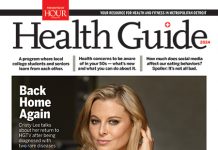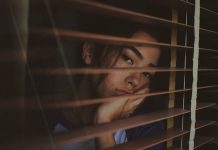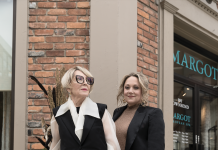
Dr. Zafar Shamoon, chief of emergency medicine at Beaumont Hospital in Dearborn since 2016, is one of those front-line COVID-19 heroes we hear so much about but whose life-saving work is happening almost entirely out of sight. As this crisis ground into its third month in the U.S., he gave us a detailed look at a typically atypical day in the teeth of a pandemic that has hit metro Detroit particularly hard. Here are excerpts from an audio diary Shamoon recorded during a 7 a.m. to 7 p.m. shift on April 27. It was the fourth day of Ramadan, so the doctor was fasting, and that brought with it unusual personal challenges.

9:12 a.m.
It used to be that IŌĆÖd walk into work not knowing what to expect. I loved that. It kept the day exciting for me. Nowadays, itŌĆÖs high acuity COVID patients and really nothing else because many people are afraid to come to the ER with other things. A lot of folks die at home now who should have come in.
Already, IŌĆÖve seen a couple patients with COVID. We were able to send one home, a 31-year-old African American woman with mild symptoms. IŌĆÖll check up on her tomorrow. Then we had one in her 60s with diabetes and hypertension who needed to be admitted. My colleague had an 80-year-old woman he had to intubate while we waited for a COVID test, but weŌĆÖve gotten so good at this that we know sheŌĆÖs COVID from her respiratory symptoms. ItŌĆÖs always tough to intubate because you know that some of these patients are not going to come off the ventilator.
IŌĆÖm fasting today ŌĆö no food, no water ŌĆö so thatŌĆÖs challenging on a long shift, especially when the donations of food start coming in. But fasting increases my focus because I know I canŌĆÖt turn to food and caffeine. I miss coffee most. I usually have two or three cups during a 12-hour shift.
10:33 a.m.
We just intubated a 75-year-old African American female with COVID and a history of lung disease and obesity. WeŌĆÖll have to see how she does in the ICU for the next couple of days.
One of the greatest risks to us is the intubation process because COVID is an airborne disease. YouŌĆÖve got to really protect yourself. Normally, we have six people in the room for an intubation, but now we try to minimize it to a respiratory therapist, a nurse, and a doctor. Everybody has eye shields, headgear, gowns, ideally shoe covers, and N95 masks. IŌĆÖm very proud that I made intubation kits for my docs so theyŌĆÖre not running around looking for stuff, because supplies are like gold nowadays.
In the last hour, I received calls on three Priority 4s, which means someone could not be resuscitated in their homes. I had to pronounce them dead over the phone. That is crazy insane. Patients need to come into the ER if they have chronic illnesses and are having chest pains, shortness of breath, severe abdominal pain, severe headaches, uncontrolled hypertension, or high blood sugars. These are common diseases we can fix. But the general population is not coming in despite us having clean areas for taking care of them, because theyŌĆÖre afraid of COVID.
I did have a lady in her 50s come in with a mini-stroke. We admitted her, and it turns out she has kidney disease as well. This lady had a sudden loss of vision and right arm pain, and her symptoms resolved by the time she came in. But IŌĆÖm glad she came in because this could be a sign of a major stroke to come. ŌĆ” We can help prevent that major stroke. But not if she didnŌĆÖt come in.
12:39 p.m.
IŌĆÖm definitely missing my cup of coffee. IŌĆÖm getting a headache. I hope to get my second wind here. We had one patient in her 50s with shortness of breath who IŌĆÖm testing for COVID. SheŌĆÖs not intubated yet, but we have to set up and gown and dress like we would to save time if she needs it. IŌĆÖve seen a couple of knee sprains and a couple of shoulder pain cases. It was exciting to see those non-COVID patients. I missed that population of patients.
This pandemic has been a change for my residents too. We just got done rounding and weŌĆÖre talking about COVID and theyŌĆÖre learning just as quickly as I am for the first time. Are these people developing into strokes? Should we be giving them antiviral meds? Should we be giving them antibiotics? TheyŌĆÖre learning and sometimes teaching us at the same time.
The resident IŌĆÖm working with today tested positive for COVID and was out for about a week, so itŌĆÖs good to see him back. We also had another ER doctor diagnosed with COVID. He was out for about two weeks. I actually saw him as a patient, and he was looking very sick, and we knew right away that he probably had it.
1:13 p.m.
We just had another COVID gentlemen, 89 years old with a history of dementia, come in by himself. A lot of patients come alone because family is afraid to come in, and we do have strict visitor restriction policies. We certainly donŌĆÖt want to spread this to other family members, or maybe family members spread it to us as staff members or even to other patients. ItŌĆÖs the right thing to do, but having a loved one around makes a big difference because of the additional history we can obtain.
COVID testing is way better since this all started. IŌĆÖm looking at up to a two-hour turnaround time. When this first started, we were not getting any results back. We treated the first case at Beaumont Health Systems, and 40 hours later, I was feeling sick, so I got tested. My test got sent to the state and it took six days to get back to me. Meanwhile, I self-isolated. As soon as my test came back negative, I rushed back to work.
Those days are gone here. ItŌĆÖs not there yet, though, throughout the country. We still need to have more testing availability to get better numbers, get better research studies, get better answers. Then you can break down who seems to be getting it more. Is it truly the elderly? The ones with just hypertension and diabetes? The ones who are obese? Is there a male or female predominance? These things are helpful for vaccine trials.

3:24 p.m.
We saw a COVID patient I saw last week and sent home because she was stable at the time. She comes back today with increased work of breathing, and oxygenation saturation was 75%, which is low. We put her on some oxygen and sheŌĆÖs feeling better already. But thatŌĆÖs the issue with this disease is that some of these patients we send home, theyŌĆÖre not turning around. This lady has heart disease. It goes along with the theory that the more co-morbidities you have, the less likely you will recover fully, or it might take you longer to recover. WeŌĆÖre not seeing a lot of healthy people having a high mortality except in some rare cases.
We rounded with my resident, and half the patients were not COVID, so that was good to see.
4:49 p.m.
Some of the nurses are eating Arabic food from HabibŌĆÖs in Dearborn, one of my favorite restaurants, but I held steady.
WeŌĆÖve seen many more patients come in with COVID potential in the last couple of hours. I have a 35-year-old girl with a high fever, most likely COVID. One 60-year-old lady with a history of asthma who is still positive from a week ago with symptoms that are not getting any better, so she will be admitted. Today, we have intubated, between my colleague and me, four patients and admitted many with COVID.
COVID has decreased our overall volume. We used to see a lot of trauma, car accidents, gunshots, knifings. We had excellent trauma here from a learning standpoint, where my residents leave here really solid because they do so many procedures. They do so many chest tubes, intubations, central lines. I canŌĆÖt even remember the last time we had a gunshot at Dearborn. We had a couple of knife injuries over the weekend. One was a domestic case. Domestic violence has gone up since this quarantine and stay-home order.
We also are seeing fewer positive tests. The social distancing is working, and we donŌĆÖt see as many patients coming at once anymore. When this all started, we were just overwhelmed with how many patients came in at once who were sent to the ICU.
We received good history on the patient with dementia from his son. HeŌĆÖs got some black-tar stools, which could be a sign of a GI bleed, and he tested positive for COVID at U-M a couple of days ago. As I said before, having family or someone here makes such a difference in making the right diagnosis.
5:31 p.m.
I just stepped outside to get some fresh air. I have admitted my last four patients, three with COVID. ItŌĆÖs so weird because our ER waiting room is empty. Usually, thatŌĆÖs where families stay. ThereŌĆÖs only one family member here today. It must be hard for family members not knowing whatŌĆÖs going on, not being able to be with their loved ones when they most need them.
I have an hour and a half left to my shift, so IŌĆÖm going to wrap up with my patients, make sure theyŌĆÖre tucked in properly, and wait for the night crew to come in. ItŌĆÖs been a long day today with a lot of sick patients. The fasting hasnŌĆÖt affected me because IŌĆÖm so focused. ThatŌĆÖs GodŌĆÖs will, to give me the ability to take care of these patients even when I have no food or no water in my system.
7:37 p.m.
IŌĆÖve wrapped up for the day. I wonŌĆÖt be home till 8:15 if IŌĆÖm lucky. We break fast around 8:30. I like to break fast at home as opposed to the hospital unless IŌĆÖm with colleagues. If weŌĆÖre on the overnight shift, we try to break it together. It brings solidarity to the group, I think. But I do like to go home and see my kids after a long day.
Now itŌĆÖs time to go home. The routine nowadays is to bleach-wipe the keys, my phone, and my badge before I leave and change into the clothes I walked into the hospital in. I take my shoes off at the garage, run upstairs, take a quick shower, shampoo my hair. Then I break my fast, play with the kids for a little bit, and help put them to bed. Then at night my wife or I wipe down all the bathrooms, the door handles, the light switches, the phones, the remote controls.
I think we saved a couple lives today. IŌĆÖll reflect on the day after the fast and my night prayers, as I always do. IŌĆÖll pray for my patients. IŌĆÖll pray for my staff. IŌĆÖll pray for my ER colleagues. IŌĆÖll pray for my residents and IŌĆÖll pray for, really, the world during this pandemic.
|
| ╠² |
|










